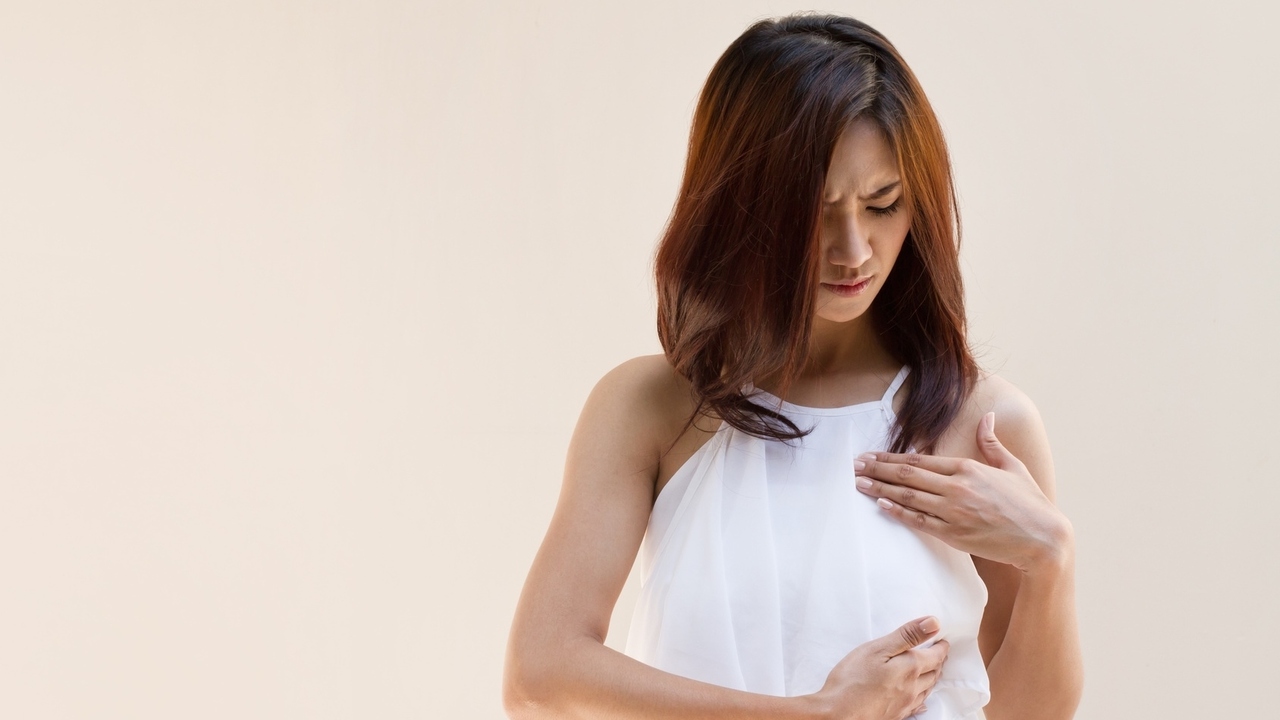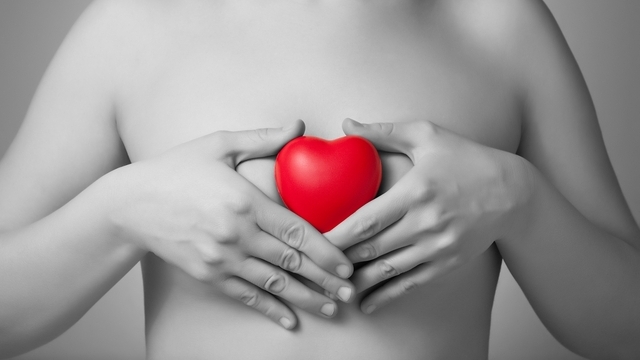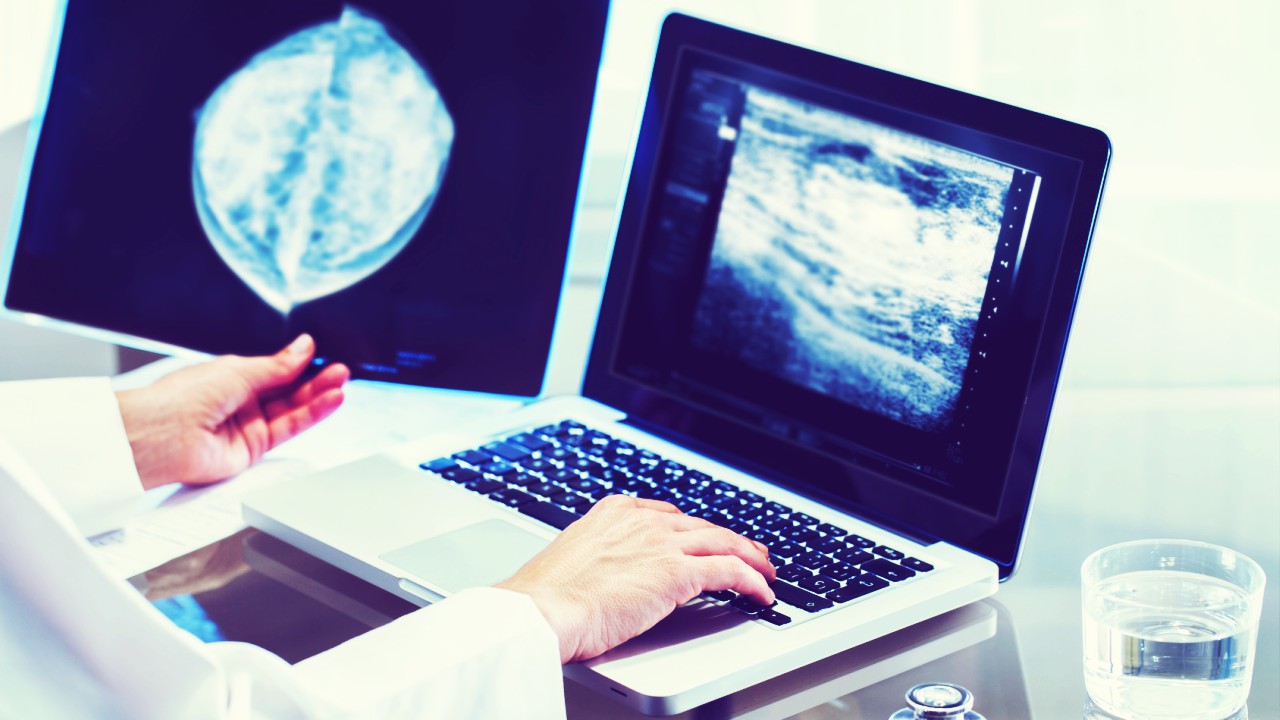 9nong/Fotolia
9nong/Fotolia
Breast cancer is one of the most common types of cancer for women in the United States, second only to skin cancer. Approximately 1 in 8 women will develop breast cancer at some time during their lives. (1)
Check out these seven facts you may not know about breast cancer:
1) Breast cancer is not just a woman's disease.
Breast cancer is rare in men, but it is possible for a man to get it. In a given year, approximately 2,300 new cases of breast cancer are diagnosed in men, while about 230,000 new cases are diagnosed in women. (1, 5)
2) Breast cancer may not start with a lump in your breast.
The most common types of breast cancer develop as a tumor or collection of cancer cells that will create a lump in your breast. But some less common types of breast cancer do not form a lump or tumor.
According to the American Cancer Society, these symptoms may also mean you could have breast cancer:
Swelling – A swollen breast, or swelling or lumps in your armpits or around your collar bone, could be a sign of breast cancer.
Thickened or red skin – Skin changes could be caused by an infection, or may indicate breast cancer.
Hot or itchy – If your breast feels unnaturally warm or itchy, talk to your doctor to rule out the possibility of breast cancer.
Nipple changes – If your nipple turns inward or if the skin around the nipple looks red, scaly or thick, it could mean breast cancer. Tell your doctor if you have discharge from the nipple other than milk, especially if the discharge is bloody.
Pain – Most types of breast cancer do not cause pain in the breast but some types can be very painful.
If you see or feel any of these changes in your breast, talk to your doctor right away, even if you don’t find a lump.
3) Breast awareness can help you recognize breast cancer.
Doctors used to recommend that all women do monthly breast self-exams to check for lumps. Now, doctors recommend breast awareness as a better tool for self-assessment.
This method includes a monthly self-exam to check for lumps, as well as being aware of the normal shape, size and color of your breasts, so you can recognize any changes.
In addition, make sure that your doctor knows if any of your immediate family members have, or have had, breast cancer. This can put you at higher risk for the disease.
But don’t think you are safe if your family history is clear. Between 80 and 85 percent of women who have breast cancer have no family history of this disease. (3)
4) Mammograms are not foolproof, but they are important.
Mammograms are still the only method of screening available that can pick up some of the earliest signs that breast cancer may be developing. But mammograms can sometimes give unclear results that may need a second round of imaging. Dense breast tissue can also make it harder to get an accurate mammogram image.
Experts say mammograms can reduce cancer deaths by as much as 20 percent. Mammograms are a tool that can provide early detection of breast cancer which translates to patients needing less harmful treatments and generally living longer. (2)
Mammograms help doctors know the status of your breasts at the moment the images are taken. Cancer may develop in the weeks and months between one mammogram and the next. So don’t be complacent in thinking that you are safe from the threat of breast cancer because your mammogram was clear.
The American Cancer Society recommends annual mammogram screenings for women starting at age 40. Between mammograms, continue to be aware of your breasts and talk to your doctor about any changes even if you just had a clear mammogram.
5) Genetic mutations are not a common cause of breast cancer.
Angelina Jolie jumped into the headlines when she announced that she had a BRCA genetic mutation that put her at high risk for breast or ovarian cancer. She opted for surgery to reduce her risk, even though she had not been diagnosed with cancer.
Genetic mutations like Jolie’s are found in approximately 1 out of every 400 people, which is the most common type of genetic mutation associated with breast cancer. Even so, only about 10 percent of all breast cancer cases are linked to this type of genetic mutation. (2)
If you are concerned about a family history of cancer that could suggest your family carries this type of genetic mutation, talk to your health care provider to find out about genetic testing.
6) You are not immune to breast cancer.
No one is immune to the possibility of breast cancer. You cannot be too young or too old to get breast cancer. Gender does not protect you from breast cancer. Not having breast cancer in your family does not mean you can’t get it.
Eating a healthy diet or exercising does not mean you cannot get breast cancer. Herbal remedies and dietary supplements cannot prevent or treat breast cancer.
7) You can reduce some of your risks of breast cancer.
Some risk factors, like age or gender, are out of your control. Other lifestyle risk factors can be changed or reduced if you choose to do so. Pregnancy, breastfeeding, birth control, hormone replacement therapy, being overweight or obese, not getting enough exercise, and drinking alcohol can all affect your risk of breast cancer.
If you have questions about breast cancer or your risk of getting breast cancer, talk to your health care professional.
Sources:
1) American Cancer Society. What are the key statistics about breast cancer? Stacy Simon. Web. October 12, 2015.
http://www.cancer.org/cancer/breastcancer/detailedguide/breast-cancer-ke...
2) Cleveland Clinic: Health Essentials. Holly Pederson, MD. 8 Common Misconceptions About Breast Cancer. Web. October 12, 2015.
http://health.clevelandclinic.org/2015/09/8-common-misconceptions-about-...
3) University of Michigan Comprehensive Cancer Center. 16 common myths about breast cancer. Web. October 12, 2015.
http://www.cancer.med.umich.edu/news/brcancer_myths06.shtml
4) American Cancer Society. Breast Cancer Symptoms: What You Need to Know. Stacy Simon. Web. October 12, 2015.
http://www.cancer.org/cancer/news/breast-cancer-symptoms-what-you-need-t...
5) American Cancer Society. Breast Cancer: Causes, Risk Factors and Prevention Topics. Web. October 12, 2015.
http://www.cancer.org/cancer/breastcancer/detailedguide/breast-cancer-ri...
Reviewed October 14, 2015
by Michele Blacksberg RN
Edited by Jody Smith






Add a CommentComments
There are no comments yet. Be the first one and get the conversation started!